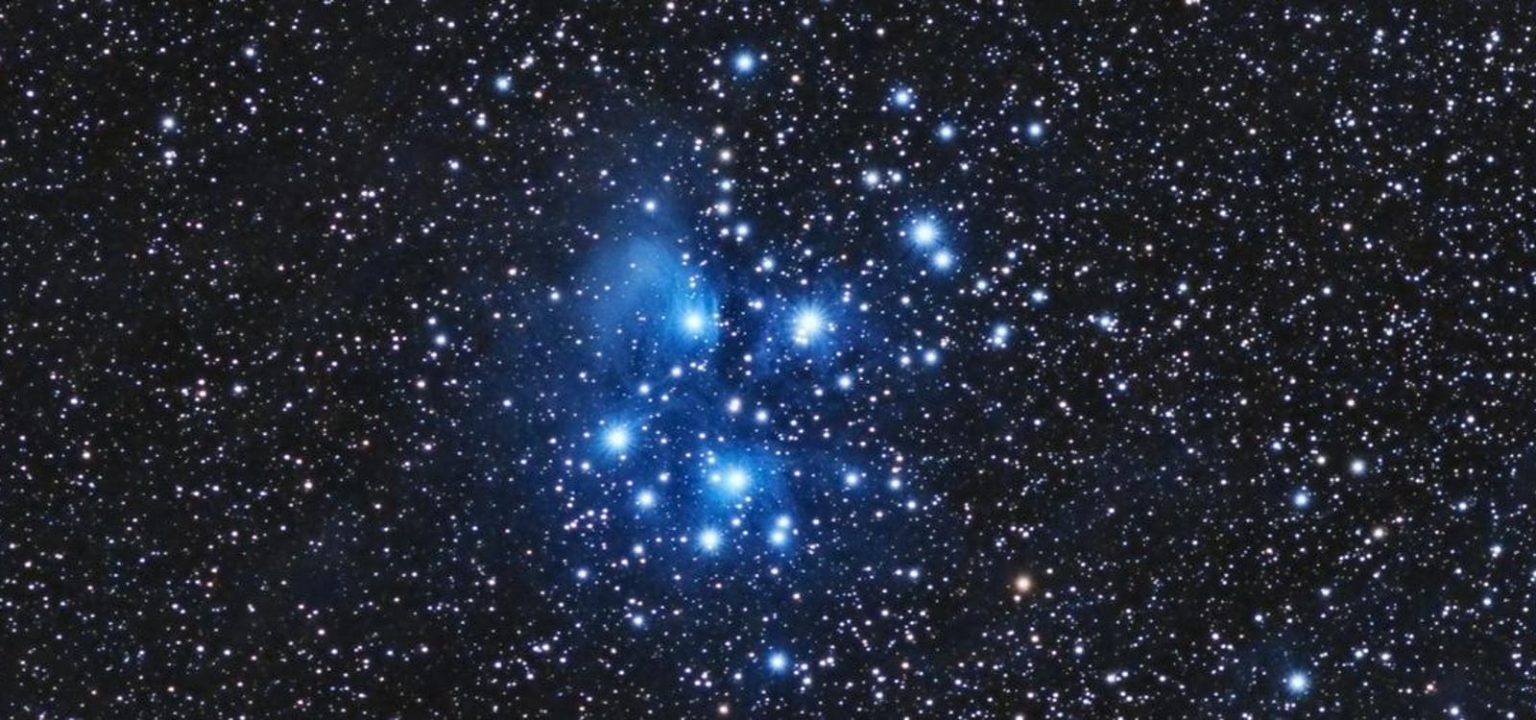The full “Beaver Moon” is coming soon, but before it rises in a blaze of color on Monday, November 27 our natural satellite in space will make a close pass of three notable objects in the night sky.
However, only two of them can be seen with the naked eye.
This coming Friday and Saturday, the moon, waxing towards its full phase, will be visible very close to the planet Jupiter, itself shining very brightly after its recent annual opposition. Saturday also presents an unusual opportunity to use the moon to find the dim planet, Uranus, the seventh planet from the sun, and usually very hard to find.
Finally, one of the most beautiful naked eye jewels of the night sky—the Pleiades open cluster of stars—will be closely passed by a waxing gibbous moon on Sunday as the “Beaver Moon” approaches.
Here’s everything you need to know to use the moon this weekend to find the two planets as well as a beautiful star cluster:
How The Moon Will Move This Weekend
All this week, there’s been an afternoon moon. It happens before every full moon because the moon orbits the Earth from west to east—or anticlockwise from the north pole—so rises earlier each evening. The difference each day is about 50 minutes. Go look for it at the same time each evening and you’ll notice it has moved about 13 degrees east of where it was the previous evening.
When you go outside to look for the moon, this week, you can do so before it gets dark. The moon won’t become super-bright until twilight, but you will easily be able to see it in the southeastern sky before sunset.
When To See The Moon And Jupiter
Friday, November 24 & Saturday, November 25
You’ll get two chances this weekend to see Jupiter close to the waxing gibbous me. On Friday, the giant planet will be slightly below a 93%-lit moon while on Saturday, it will be slightly above a 97% lit moon.
If you do have binoculars, this is the perfect opportunity to point them at the moon’s craters and mountains, but also at Jupiter itself. You won’t get any lunar surface details through binoculars, but through any binoculars, you will see at least three of its four giant moons—Ganymede, Callisto, Europa and Io.
When To See The Moon And Uranus
Saturday, November 25
Saturday also brings a rare chance to get eyes with the third-largest planet in the solar system, Uranus, which the moon will pass closely. You’ll need binoculars or a small telescope to stand any chance.
The light from Uranus looks blue-ish and will have taken almost three hours to cross about two billion miles/three billion kilometers that separate Earth from Uranus (about 20 times the Sun-Earth distance).
When To See The Moon And The Pleiades
Sunday, November 26
Look east at dusk and the moon will appear almost full, but not quite. Look slightly above it and you’ll find the sparkling open cluster of stars called the Pleiades, which are usually an easy naked-eye sight.
That won’t be the case tonight because the glare of the moon will make the Pleiades hard to see. The answer is to put a pair of binoculars on the moon, then look directly above its limb. You should see the stars of the Pleiades without much trouble.
When To See The Full ‘Beaver Moon’ Rise
Monday, November 27 (North America) or Tuesday, November 28 (Europe)
If you’ve been watching the gibbous moon grow each evening this week then it would be remiss of you not to watch it culminate as the full “Beaver Moon” on Monday evening. That’s when it will be best viewed rising in the eastern sky from North America, though Europe gets a better view of our natural satellite appearing in twilight on Tuesday evening.
Also called the “Frosty Moon” and the “Long Nights Moon” for obvious reasons, the rise of November’s full moon will occur within minutes of the sunset.
Wishing you clear skies and wide eyes.
Read the full article here





